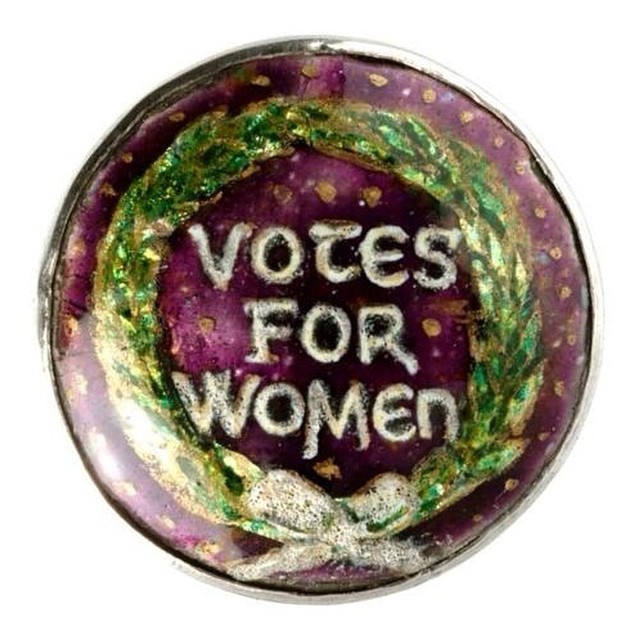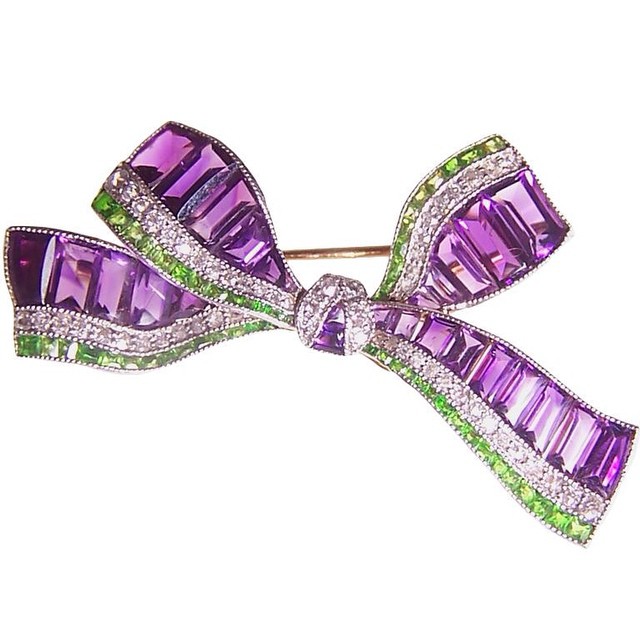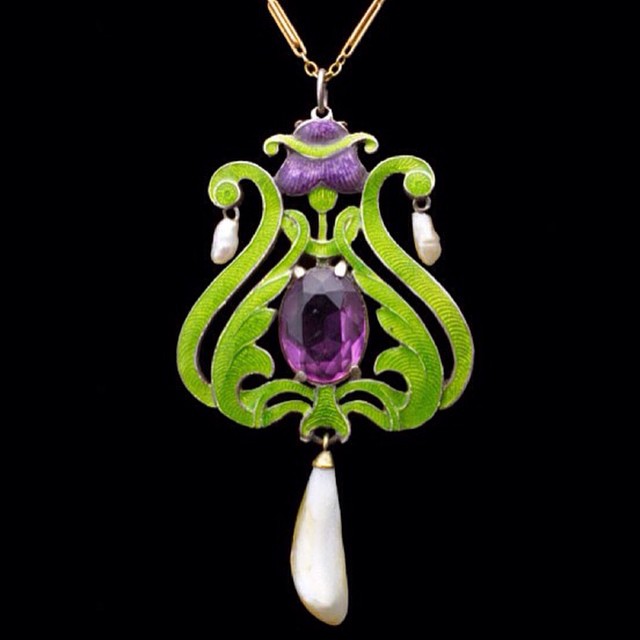Women's Sufferage
/Suffrage era jewelry has always been one of my favorites. Support, protest, and adornment all rolled into one. With another election race firing up it is a good time to look back and reflect on all the struggles that so many have faced (in many countries) in the pursuit of the right to vote.
Women's suffrage (the right to vote) in the United States was established over the course of several decades, first in various states and localities, sometimes on a limited basis, and then nationally in 1920. The movement in both Britain and the US relied on color as a means of instant recognition.
British suffrage colors - purple, white, and green, to symbolize loyalty, purity, and hope.
Gold banner with purple lettering produced by the National Woman's Party. The Party, in spite of its close ties to the British movement, adopted the traditional American color of gold.
In America we see the use of gold or yellow coupled with a variety of subordinate colors. Gold/yellow ribbons and flowers were popular. During the nation's centennial celebrations in 1876, suffrage supporters sang "The Yellow Ribbon" song that associated the color with "God's own primal color; born of purity and light" and with the "flame of freedom's fires." American women later adopted a second color scheme of the tricolors purple, white, and green which originated with the Women's Social and Political Union in the British suffrage movement. Later, this would change to purple, white, and gold.
We see these color schemes throughout the decades long fight for suffrage. The beautiful and quietly powerful jewelry pieces created during the fight for women's equality would have signaled the wearer's support for the movement, with or without a slogan, even when the wearer was silent.
Gold pen used in the suffrage signing ceremony when the Senate passed the Amendment. The pen is housed in the Women's History Collections, Political Collections of the Division of Social History, National Museum of American History, Smithsonian Institution.
Kathleen Marino M.A, G.G., AJP, NAJA



















